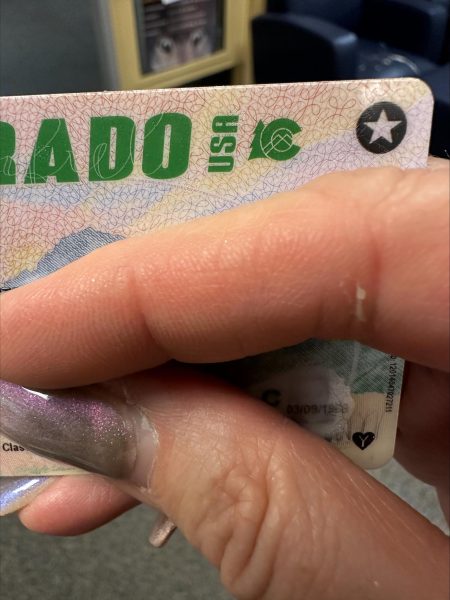Students See Increase in Use of “Dip” Tobacco
Years of anti-smoking education and advertisements are taking their toll on Joe Camel and the Marlboro Man, but anti-tobacco advertisement seems to have missed tobacco users who aren’t smoking it.
Despite smoking tobacco still being the most common way to facilitate nicotine intake, the sales and popularity of smokable tobacco (e.g. cigarettes, cigars, hookah, etc.) have been on the decline. From 2000 to 2014 (when the most recent measurement was taken), the percentage of smokers in the United States has declined 40% per data from the Center for Disease Control (CDC).
However, while smoking tobacco has been in decline, the same CDC data show an increase in users of smokeless tobacco since 2000. Part of that new demographic of smokeless tobacco users is a growing number of high school students picking up the can (or pouch).
The term “smokeless tobacco” applies to several forms of tobacco products. “Snuff” is a finely ground inhabitable tobacco. “Chew” is a processed whole tobacco leaf that the user chews on with their back teeth, and “Dip”, the most popular, is thinly cut pieces of tobacco leaves that a user packs into the space between their teeth and lips.
These forms of tobacco are different from smoking tobacco in that the nicotine is absorbed through the mouth or sinuses rather than the lungs. These products often deliver substantially more nicotine into the body than cigarettes and produce a floating, head-rush feeling that users call a “buzz.”
“Time one I loved it,” an 11th grade dip tobacco user said. “I was buzzing hard, almost puked. A few months later I threw in a pinch of Skoal Green Apple and then I bought another can the next day.”
A variety of product options, a lack of impact to the respiratory system, product marketed to new users and teenagers, and a growing community of people who see consuming smokeless tobacco as a risk-free hobby are all factors in an increasing smokeless tobacco industry, especially in teenagers.
“It doesn’t affect your respiratory system,” another junior said. “Saves the lungs and hurts the gums.”
Other alluring aspects of smokeless tobacco are the ease with which it can be purchased underage, its discreet nature, and the perception of lesser consequences for getting caught underage.
“I would say easy access is a big part of it,” another high school dip user said. “You get in a lot less trouble for it too. If you get caught with a can you won’t be in too much trouble. Get caught with weed and you’re in deep —-.”
“It’s also a lot more discreet than cigarettes,” said the same dip user. “You can do it in class, you can do it in church, you can do it everywhere.”
These factors have contributed to a growth in the number of high school students using smokeless tobacco.
Despite a perception by many students that these products are safe, that is far from the truth. They do not do the same damage to the lungs as cigarettes, but the carcinogens of tobacco and the negative health effects of nicotine are still a factor. Oral cysts, cancer of the throat, lips, jaw, teeth, sinuses and tongue are issues seen among users of smokeless tobacco. Smokeless tobacco does have a smaller percentage of nitrosamines (the cancer causing carcinogenic elements of tobacco products) than cigarettes, however, they still carry a large risk of developing debilitating cancers that can cost users their teeth, jaws and lives.
The cultural aspect is a driving force of smokeless tobacco use. Addiction, though, is still a major element.
“I’m definitely addicted,” said a junior. “I can’t do anything without a dip. I’d say I dip six or so times per day.”
Addiction, social acceptance, and the discreet way smokeless tobacco can be used have thrust it into the cultural landscape of high schools, and Rocky is no exception. The general consensus from health professionals is that it is very harmful to the teeth, gums, and throat.
Look for the extended story in the next print edition of the Highlighter.

Aaron "Butterball" Lambert is a junior and reporter for the Highlighter. He is in his second year on staff after working as sports-editor last year....







Carter Walz • Nov 4, 2019 at 3:26 pm
hi ms white
Hayden • Feb 23, 2017 at 9:26 am
i have a friend who is really struggling with this problem but i am not going to say names
Renee Lopez • Oct 28, 2016 at 12:10 pm
I really liked this article. It’s excellently written and has good statistics. I love the fact that the journalist used actual anonymous students from Rocky Mountain. It made the article an original and a terrific piece of writing, showing actual people among us that are using these deadly products.
Collin Forman • Oct 27, 2016 at 9:30 am
Screw dipping, dip spit is the tastiest drink on earth dawg.
Suk Madik • Feb 23, 2017 at 9:23 am
Why Though.
jesus • Oct 27, 2016 at 9:20 am
wow this was great
Andy Weber • Oct 27, 2016 at 9:17 am
Personally I think any kind of tobacco use today is bad but back when tobacco first started it wasn’t as bad for you over the years its been genetically modified beyond recognition. I believe that it is your body so you should be allowed to do what you want with it without being singled out/ bullied by non-smokers.